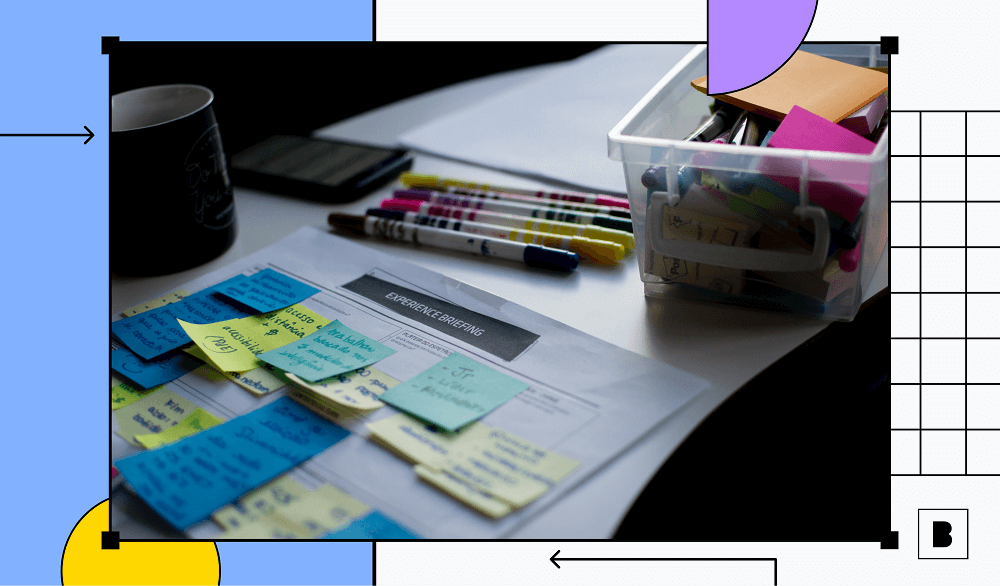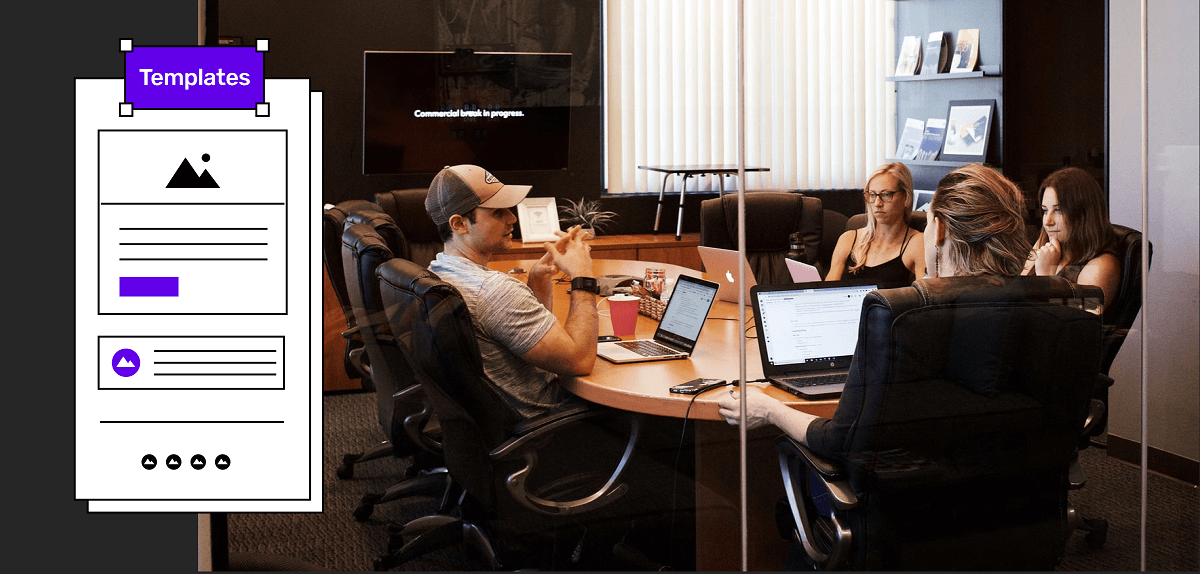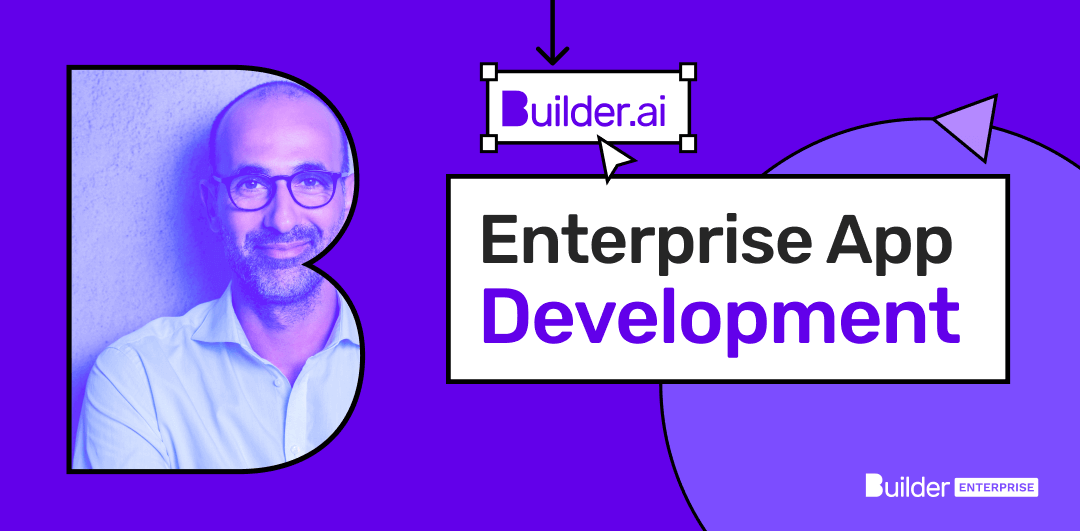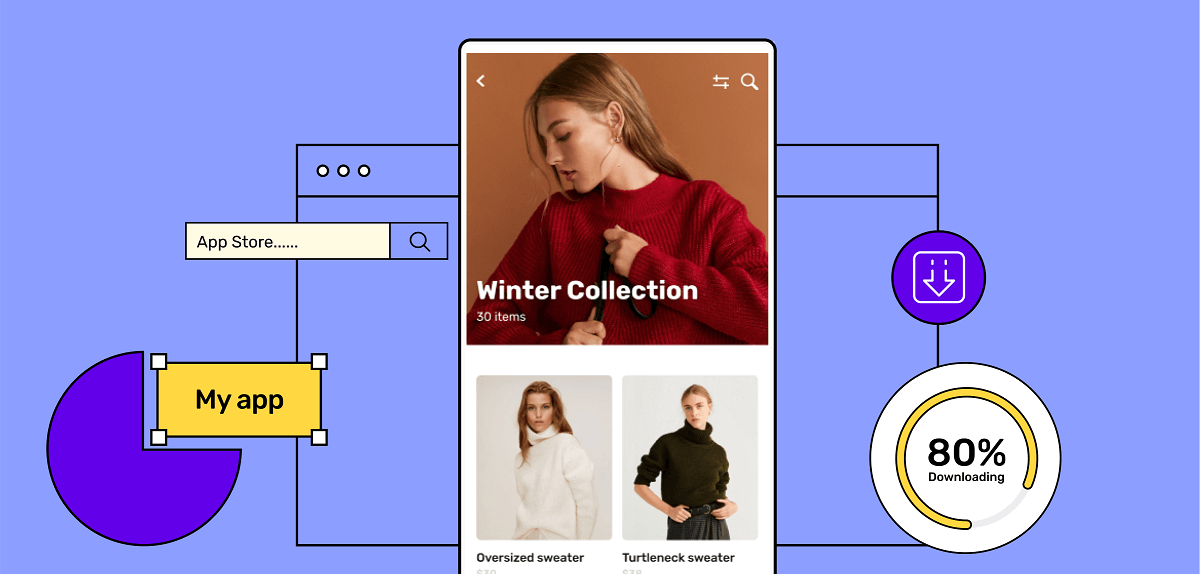Behind every successful organisation is a strong team who bounce off each other and come together to create the best outcome for each other and for their company. One thing that requires enterprise teams to really come together is the app development process. Building an app is a multi-faceted process that requires several types of skill set to complete, hence why an enterprise team is perfect for the job.
While an app builder makes the process far easier, there are still several tips and tricks enterprise teams can initiate to guarantee the best possible results from their endeavour.
Before we go on to talk about our top three app development tips for enterprise teams, let’s first explore what enterprise teams are and why app development is important to them.
What is an enterprise team?
Simply put, an enterprise team is extremely forward-thinking, innovative and collectively goal-driven. Unlike other team structures in the workplace, enterprise teams are not driven by self-interest or individual praise. Their role within an organisation is to work together, maintain collective responsibility, and push the company forward.
Values and goals are more team-focused rather than individually focused, with everyone wanting to further the team and company as a whole rather than their own career. That being said, the enterprise offers some fantastic long-term career options, and the impact they can have on an organisation is unmatched.
Why do enterprise teams need app development?
The point of enterprise teams is to act in the interests of the broader company. Times are changing and businesses are handling more data and more sensitive documents than ever before. With the inception of the internet, most businesses are also dealing with high profile, international clients and a generally higher number of customers than at any other point.
Being so innovative, enterprise teams more than likely recognise the impact of human error, but also how their jobs could be put to better use if they automated some of their processes and procedures.
With this in mind, a lot of enterprises are looking to venture into app development, but for reasons different than other small businesses. Enterprises tend to be big businesses with lots of employees, and the roles those employees play is vital to the continued growth of the business. Rather than focusing solely on the front-end that clients see, enterprises work equally as hard behind the scenes to ensure their staff have the support and infrastructure they need to complete their jobs to a high standard.
For this reason, a lot of enterprise teams are beginning to seek out app development platforms to help them automate parts of their roles so that they can spend their time more wisely elsewhere.
Enterprise app development tips
Enterprise teams are highly talented and skilled personnel with an unrivalled level of shared experience and team experience, but you can never know it all. That’s why we’re sharing our top three app development tips for enterprise teams, to help every team be the best they can be.
#1. Choose team roles

First, you need to choose different team roles for your app development project. Even if you’re going to be using an app builder, there are still several different jobs that can be assigned to members of your enterprise team. The great thing about assigning roles is that every aspect of your app will be paid due diligence, furthering the chances of a successful app that will work on every level.
Often you can tell when an app development team has focused their energy on one main section and given less time to other parts. If you want a well-rounded app – as all enterprise teams do – you need to give 100% to every aspect of it. The best way to do this is to assign team roles.
Typically speaking, your app development team should comprise of:
- Project manager
- UX/UI designer
- Coding expert
- Marketing strategist
These roles could vary depending on whether you choose to use an app builder for your project, or if you decide to build your app yourself. If you plan on using an app builder, you won’t need a coding expert or a UX/UI designer, but you will need a project manager and a marketing strategist. If you use a low-code app builder, you may still need a UX/UI designer and coding expert, but to a lesser degree.
Enterprise teams are highly skilled and diverse, so you may have more than one choice for each of the roles. If the app is set to be a big project with multiple functionalities, such as a productivity app to help corporate workers do their jobs in a more efficient and sensical way, it will make sense to have two or more of each role. Otherwise, one will suffice.
You might be wondering how you can transform your enterprise team into an app development team, and the answer is simple: pick people based on their skills.
Project manager
First and foremost, you need a project manager. A project manager will oversee the whole project from beginning to end, and they will be the person who takes responsibility for all aspects of the app development process. They will act as the person who everyone else goes to if they’re unsure about something or if they need to sign off on an idea or element.
Moreover, project managers are responsible for ensuring the project is completed within the allotted timeframe, and that it remains on budget. They will need to support everyone else involved in the project on a managerial level, and they will also need to be responsive to any changes or issues along the way.
Ultimately, a project manager is in charge all around. This means you need to identify the best team leader within your enterprise team to take on the role. An app is a big investment, so you’ll need to choose a person who can handle themself well under pressure, who can guide and support their colleagues, who are extremely organised, and who can multitask umpteen jobs at any one time.
Project managers need to be able to lead, but they also need to be able to listen. It’s not enough to come up with a plan of action and expect everyone to work on it without first asking them their thoughts. Project managers need to understand their colleagues well, and they need to be able to take heed from them and work to their requirements. It could be that your UX/UI designer needs more of your time or specific resources from you than other members of your team.
It is the project manager’s job to ensure they listen to everyone involved in the project and give them the tools they need to do their job, but they must ensure they do it within the allotted constraints e.g. time and budget. A project manager is a bit like a jack of all trades – so make sure you choose the person on your enterprise time who has experience in managing a project that is as demanding as creating an app.
If you choose Builder.ai, things are a little different. We manage your entire project for you – you don’t need to speak to developers or worry about costs (it’s all fixed upfront) and you get your own expert project manager who’ll update you on progress at a weekly meeting.
UX/UI designer
The next job is as a UX/UI designer. This person will be responsible for the app design. They will plan what they want the app to look like, making sure to take into consideration the overall goal of the app. A specialist UX/UI designer will then go one step further and pair the look of the app with user functionality.
It’s no mean feat to be able to combine form and function into one cohesive mobile phone or desktop app. The designer may need to liaise with the marketing strategist to identify key functionalities the target demographic will want. They will also need to talk to the coding expert to see whether their ideas can easily be brought to fruition. A lot of UX/UI designers have previous experience with coding, so if you have a member on your enterprise team who can bring visions together, but who also has a relative idea of the work that goes on beneath the surface to make things happen – they should be a front runner for the designer job.
A good UX/UI designer will have an eye for detail, be innovative, bold and always put function over form. They should also have a good grasp of best practices. For example, they should be clued up enough to recognise that colour coding navigational tools is a no, but that unique design features in line with current trends are a yes.
In addition to app design, the UI/UX designer will also be responsible for much of the marketing collateral design, ensuring that the campaign that goes live matches the theme of the app for branding consistency.
Ideally, the UX/UI designer you choose for your app development project will be able to take constructive criticism. This is because before your app goes live, you will need to undertake extensive customer research and complete A/B testing, the results of which you will need to take on board to give your app the best chance of success.
Coding expert
Perhaps one of the most important people on your app development enterprise team is the coding expert, at least if you’re building your app from scratch. In the case of an app builder, you won’t need a coding expert. This is because the app builder will automatically code your app for you.
All you need to do is chat to our expert, explain what you want and pick features together, that slot together like Lego. Then these get customised by developers who you don’t need to manage. There’s no need to code anything. This is a good option for enterprise teams who don’t have a coding expert to hand.
That being said, there are instances where you may want to hard code your app, such as if it’s a commercial assistant app. In such cases, you will want to bring onboard a dedicated coding expert. You could hire an agency to do the techy bits for you, but this will be a lot more expensive, and it could greatly hinder the timeframe you’re working towards.
Not only this, your designer and coder will be working hand in hand a lot of the time to bring the two core aspects of your app together. It will be far easier if they are near each other and can bounce off each other during the creative process.
In terms of coding, your decision will be largely based on the type of app you’re building and the platforms you plan to release it on. The Apple App Store and the Google Play Store operate differently, and apps on both stores are written in different coding languages. Apple requires its apps to be written in Swift code. This isn’t a versatile code like Java (which is what Google apps are written in), but given how prolific Apple has been with bringing apps to the mobile mainstream, it’s something most mobile app developers will know very well.
If you want to launch your app onto two different platforms, you will need to create two different versions of it. On the surface, both versions should look identical for uniformity and consistency, but underneath, the code will look very different.
You need to ensure the coder you choose can do both. If not, get two coders who can bounce off each other and work their magic. If you want a desktop app, you should look to find a coder who specialises in web apps. It could be that you have multiple coders to keep your project running on time. Again, this isn’t an issue with us as we don’t start from scratch – so it’s faster and more cost effective to add extra platforms, like iOS, Android and web.
Marketing strategist
The final major role within your app development team is that of the marketing strategist. Often forgotten and overlooked in the grand scheme of things, marketers are an essential facet of any project, but as an enterprise team, you’ll know this. You could build the best, most revolutionary app of the year. But if you fail to market it properly, it won’t ever see the light of day and will instead get lost in the thousands of apps that are released every 24 hours.
The marketing strategist needs to be involved from the very beginning. From initial research into the product, looking at market trends and identifying competitors and what they’re doing, through to the app launch and the follow-up campaign that will push your app into the mainstream, the marketing strategist will tackle it all.
A lot of teams have multiple marketers due to the sheer scale of the job they need to undertake and the fact that they’re needed at every step of the process, and still needed way after everyone has done their jobs. If you only have a small team to choose from, select the person you feel is most experienced in digital marketing.
A marketing strategist needs to be on the ball at all times. They should be aware of current market trends, be able to identify what’s trending and what’s not, feedback to the designer(s) what their target audience will be looking for and will appreciate, conduct thorough research through the testing phase, and be able to communicate with developers and designers to deliver the most refined final product.
A good marketing strategist will be incredibly savvy and able to think on their feet, have a really good grasp of their target audience, be analytical and data-driven, and know what to do if things don’t quite go to plan.
Choosing the size of your team
So, now you know what type of roles you need to fill, you might be wondering how to tell how many of each person you need. Only you can answer that question. You need to be mindful of the fact that if you understaff your project to save costs – or simply due to lack of planning on your part – you risk your entire project being thrown off track.
One of two things typically happens when a project is understaffed. It’ll either be completed on time but to a poor quality that will reflect badly on your brand and not communicate your goals clearly at all. Or, the project will be done to a high standard, but it won’t be done on time.
On the other hand, if you overstuff it, you’ll end up with too many people all trying to do the same job. This could harm every aspect of your app, from the creative process right down to the technical side that makes the app actually work.
To find out how many people you need, talk to your team. Enterprise teams generally work well under pressure, but it’s important to get their feedback to see how they feel about working solo or with other people. Ideally, you’ll have members who are multi-faceted and can assist other members when needed.
If a team member gets sick and needs time off, or if they have a holiday with their family booked in the middle of the project timeline, you’ll want to make sure there is someone available who can fulfil their role. You’ll also want an extra pair of eyes who know what they’re talking about so that they can give accurate feedback and conduct quality control (to a degree). It’s a bit like. Double lock; it’s not 100% necessary, but it sure does give you added peace of mind.
Talk to your team and see what they think is best, and work this alongside your app budget (both financial and time-wise) to determine how big your team needs to be.
#2 Prepare a comprehensive plan of action

Once you have your team in place, you need to create a plan of action. Enterprise teams are known for being highly skilled and organised, so this shouldn’t be too hard, but there are a lot of steps to app development. If you’ve never seen anyone create an app or explored the process before starting your own, it can be a daunting prospect.
There are eight main steps to creating an app, all of which need to be accounted for. First, you need to do your research. This is where your marketing strategist will come in. They will need to explore the market (with the help of the project manager) and determine whether there’s a viable gap for you to launch your product. During this process, they will be looking at competitors and identifying what they’re doing, any trends that are happening, and what their reception is like.
Checking customer reviews is essential during this stage, as is picking out anything you think competitors are doing well that you should be implementing, and anything they’re doing not so well that either needs to be improved upon by your team or avoided altogether. Data will need to be collected in terms of design and functions, and this will need to be passed onto the UX/UI designer and the coding expert.
Once all the research is complete and you’re clear on what you’re doing, how it’s going to work and whether your idea is viable, you then need to turn your attention to the initial design. As mentioned, a lot of this will be drawn from market research completed during the initial stages, but a lot of it will also come from conversations with the project manager and the coder to determine priorities and what exactly is possible.
Once the bare bones of the initial design are complete, you should then conduct A/B testing. It’s a good idea to gather a focus group – this will fall under the remit of the marketing strategist. Two designs and/or versions will need to be created, each one with subtle differences. Members of the focus group will need to test the app, answer any questions being asked, and give constructive feedback.
The UX/UI designer will need to take the feedback on board and implement it, as will the coding expert. It’s important to listen to feedback from third parties, especially from the target group you’re trying to tap into. Of course, not everything will be possible, so the project manager will need to go through with a fine-tooth comb to decide what should be changed based on the feedback received.
Next, an effective prototype will need to be created for both platforms you’re looking to release your app onto. This will come down to the coder you have on your team. Before the prototype is released, it will need to undergo extensive testing. Not played around with an app prototype before? Give our free prototyping tool a try, it lets you create one in about 10 minutes.
The project manager will ultimately decide how long the testing phase is, but if you’re building your app from scratch, it’s worth setting aside a few weeks to ensure the app is scoured from pixel to pixel. There will be bugs that slip through the net, but the last thing you want to do is release an app that is full of errors to the point it becomes unusable and users uninstall it.
Once you’re happy with how your app is functioning and how it looks, it’s time to launch it. The marketing strategist on your team should have a complete marketing plan that encompasses exactly how your app is going to be promoted in both the run-up to the launch and post-launch.
Once your app is over the line and has been launched, it’s an ongoing process to continually improve and develop your app further. You will, no doubt, receive feedback from the wider public, so once your app has had time to settle, you can begin to think about making any amendments.
It’s a good idea to retain your enterprise app development team in the future so that those who worked on the original project can continue to expand and improve the project moving forwards, so make sure you keep your initial talent on hand for the long haul.
#3. Be responsive and communicate throughout
It’s important to select a team that can communicate with each other effectively. During app development, communication is key at all stages. Enterprise teams are built on the foundation of good communication, so it shouldn’t be a tall order, but do keep it in mind. The last thing you want is to choose two dominant characters to work on your app team, only for them to butt heads and not work together effectively.
App development is a responsive process that relies on feedback. It’s not a single-track road. Ideas will get pushed back, original concepts will never make it to the final product, and the way you thought your app would look in the beginning could be very different from how it ends up looking come launch day.
Your enterprise team needs to be responsive and appreciative of feedback. Nothing is personal – they need to have a constructive mindset and a thick skin. Hard discussions will need to be had with other team members. There will undoubtedly be bumps in the road. So it’s important the whole team has a collective responsibility attitude in order to overcome problems and support each other throughout the process.
Enterprise teams are built on communication. Building an app – particularly a bespoke app – can be a turbulent process. It’s important your team is able to communicate effectively throughout. Nearly all apps that fail do so because of a breakdown in communication during the development phase. If your team communicates clearly and shares responsibility, there’s every chance of success at the end.
Build your app today
Is your enterprise team ready to build an app? If so, and if you’re looking for a no-code solution, Builder.ai is the perfect tool. Start building now.
FAQs:
How much does app development cost?
The price of app development depends on the type of app you’re building. Within an enterprise team, the project manager will be in charge of the budget. When you use an app builder like Builder.ai, the price will be clear and transparent from the outset – in fact, the price you’re given is guaranteed. If you want to add in new features later down the line, that’s easy to do too. Ecommerce apps and those with lots of features tend to cost more, but if you’re doing your app development completely in-house through an enterprise team, there is a chance you could reduce costs.
What is native app development?
A native app is an app that is built exclusively for one platform. In the case of mobile apps, you will have the choice to build your app for Android, Apple, or both (cross-app development). If you choose to release your app solely on one platform, you will need to write it in a specific code, making it native to that particular platform.
Is app development profitable?
In short, yes, app development is profitable, but it depends on how you build your app and what its functionality is. You can build a free app with the option for users to buy things internally or for advertisers to advertise on your app, or you can build a paid app where users need to pay to install it. Subscription-based apps are also a viable way to make money from the app development process. The type of app you build will dictate whether or not you want to make money from it and if so, how you plan on doing it.
Entrepreneurial senior management executive of fast growing technology businesses. Successful in taking ideas from concept to profitability, using a blend of lean, agile and rapid result methodologies. A background in building and managing cross-functional and hybrid teams, with a record for retaining talented individuals and delivering results. Skilled in developing and maintaining a clear product and project vision, strategy and roadmap. Willing and able to adapt to changing environments. Often named as a Crisis Manager with a vision to “Make Things Happen”.












 Facebook
Facebook X
X LinkedIn
LinkedIn YouTube
YouTube Instagram
Instagram RSS
RSS


